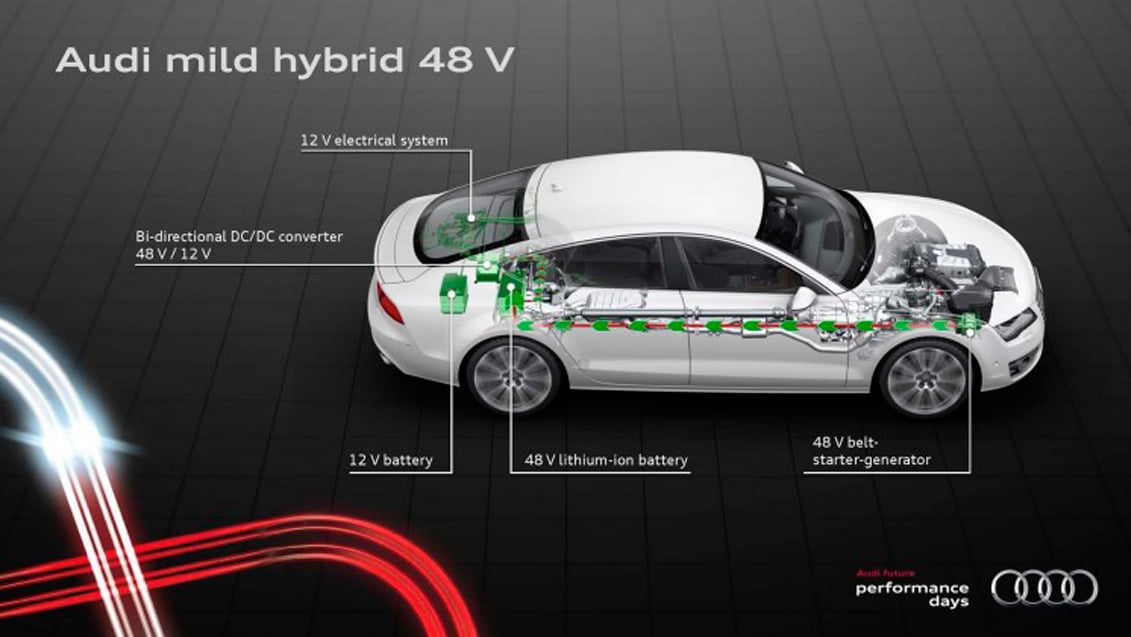Audi's eROT suspension turns the kinetic energy from traveling a bumpy road into fuel efficiency—and smoother rides.
As an example, the well-known regenerative braking system recaptures the kinetic energy of a moving car to make it go slower. In its simplest form, regenerative braking—which is mainly utilized in hybrid and EV vehicles—employs an electric motor, configured as a dynamo, to turn the kinetic energy into electricity when the car brakes.
This energy can be stored and used later to power the vehicle or its accessories, taking some of the load off the engine.
Audi's Suspension vs Traditional Hydraulic Suspensions
Audi’s electromechanical rotary damper is another example of spotting a source of wasted energy by carmakers. Traditional hydraulic suspensions damp the up-and-down motion of the wheels by converting the kinetic energy into heat. Therefore, in these systems, the increasing pressure warms up the working fluid and the energy goes to waste.In contrast, Audi has recently introduced its innovative damper, called eROT, which captures the kinetic energy from vertical movements of the car which are mainly caused by the bumpy roads.
To this end, eROT replaces the traditional hydraulic dampers with a lever arm and a horizontally-oriented electric motor configured as a dynamo. The up-and-down wheel motions are appropriately manipulated by the lever arm and a series of gears to turn the dynamo. The system then channels the recuperated electricity into a tiny 0.5-kWh 48-volt lithium-ion battery.

The eROT. Image courtesy of AutoTimesNews.
The new damper leads to fuel efficiency and effectively reduces air pollution. Test results confirm that eROT is capable of recuperating an average of 100 to 150 watts on a typical German road. It produces three watts on a newly-paved freeway and 613 watts on a rough stretch of tarmac. According to Audi, the eROT can reduce carbon-dioxide emissions by 4.8 grams per mile (3g/kilometer).
The idea of recovering the energy wasted in dampers is not new. The GenShock technology of ZF, introduced in 2013, pursued a similar idea. However, Audi uses horizontally-oriented electromechanical dampers instead of the traditional ones. The new system not only recuperates the energy but also allows more cargo space by eliminating the traditional telescopic shock absorbers which normally poke up into the cabin.
eROT: A More Adjustable Active Suspension
Audi claims that the new system increases suspension adjustability and is more successful than the traditional active suspensions in smoothing the ride on a bumpy road.An active suspension involves two features:
- the compression stroke, which determines what the occupants of the car feel going over a bump
- the rebound stroke, which influences the car’s handling.
However, according to Audi, eROT can tune the dampers' compression and rebound strokes independently of one another. Defining both these characteristics by software, eROT softens the compression stroke and keeps the rebound taut. As a result, the new system provides a better balance between ride comfort and handling.
Audi Suits the Future 48-Volt Cars
Currently, Audi hybrids exploit the 48-volt electrical system as a secondary network which operates in tandem with the primary 12-volt network. A DC converter is required to connect these two systems together. Many analysts believe the 48-volt systems will become necessary in the next few years to support the increasing amount of electronics in cars.
Many cars use a 12-volt primary electrical network in tandem with a 48-volt auxiliary one. Image courtesy of AutoTimesNews.
In addition, use of a 48-volt primary system holds the potential for storing small amounts of electricity produced by regenerative braking and regenerative suspension such as the eROT. Therefore eliminating the need for a DC converter, a 48-volt electrical system perfectly suits Audi’s new damper.
The recuperated electricity from eROT could be used to power the car’s electronics or to power the small motor in "mild hybrid" cars. A mild hybrid uses an electric motor to assist the internal combustion engine. However, these vehicles cannot operate in a fully-electric mode the way a full-hybrid can.
The current version of eROT is in the prototype stage. However, considering the successful test results, Audi expects to utilize a new version of this energy-saving and ride-perfecting technology on a high-performance 48-volt mild hybrid vehicle in 2017. Employing eROT, the 48-volt vehicle is expected to reduce fuel use by around 0.7 litres per 100km.






No comments:
Post a Comment